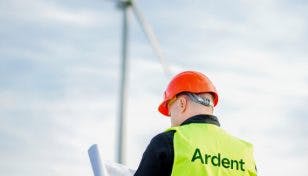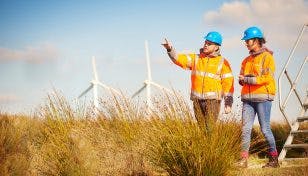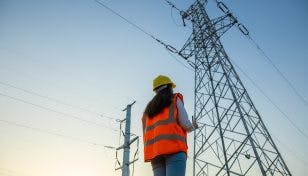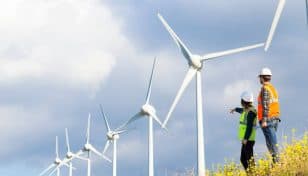Government release Energy Security Strategy
Share
If Oleta Adams had chosen to sing about #NetZero2050 it’s possible she could have penned the Government’s Energy Security Strategy.
You can reach me by wind turbine, you can reach my solar farm,
You can reach me using hydrogen, you can reach me with nuclear
You can reach me by tidal lagoon, gravitational forces from the moon*,
I don’t care how you get here, just get here if you can^
*Spoiler alert – she would have been more innovative than the Government has been if she’d written that line.
^But please don’t build anymore of those ghastly wind turbines on England’s green and pleasant land because although NetZero2050 is quite important I’d really rather you didn’t upset any of the folks in the Shires who think their unspoiled views are more important
Sadly, Oleta was just as focused on herself as the anti-windfarm NIMBYs, so alas, it was left to the Government to come up with the Strategy. Fortunately, there’s slightly more detail in what they’ve released today than there was in Oleta’s poorly-developed travel plans. However, emphasis on the word slightly.
Background
Achieving net zero by 2050 is, quite rightly, front and centre of Government policy. As such, we have understandably been expecting that the Government’s much-heralded and long-anticipated Strategy will be bold, ambitious and set out a clear commitment to put renewable technologies at the heart of the solution, rising above NIMBY nonsense to set out policies that will provide the flourishing solar and wind sectors with confidence to invest in UK plc over the long-term.
As if the need wasn’t already great enough, Russia’s invasion of Ukraine has shone an ever-brighter light on the need for the UK to develop a far more resilient energy security strategy, removing reliance on importing oil and gas from abroad. In short, we need to be far more self-sufficient, and the technology and developers are proven, ready and waiting.
On a windy island that enjoys relatively long hours of sun-light, surely, you’d think, Government will put its full weight behind solar and wind, whilst perhaps also swallowing its pride and learning from past mis-steps by committing to a plethora of tidal lagoons as well?
So, what does it say?
Leaving aside the fact that, for a document that has been delayed numerous times, it’s far shorter than I had anticipated, and lacks much detail, the good news is that the Strategy commits in a big way to both solar and off-shore wind, as well as low-carbon hydrogen production.
However, there’s no mention of tidal power and it’s hard not to conclude that the Tory backbenchers representing the shires – keen to avoid their unaffected-by-rising-energy-bills constituents having to suffer the ‘horror’ of having their views spoilt by the occasional wind turbine or habitat-creating solar-farm – have ‘got at’ the PM.
Wind
The evidence that the PM has been got at is in the fact that the Strategy, whilst setting out a plan to double on-shore wind generation from 15GW to 30GW (great news, of course, but not new news), only commits to ‘consulting on developing partnerships with a limited number of supportive communities who wish to host new onshore wind infrastructure in return for guaranteed lower energy bills’. That offers little hope that we’ll see more on-shore wind farms in England anytime soon and means the focus for on-shore will firmly be in Scotland. That feels like a missed opportunity, although the positive news is that Scotland already generates almost 9GW of electricity from on-shore wind, and the pipeline north of the border includes a further 17GW worth of schemes.
In terms of off-shore wind, Government had already committed to increase generation from 11GW to 40GW and it is no surprise (but great news) that the Strategy has pushed the ambition envelope even higher, to 50GW. With all the excitement of the recent Scotwind leasing round, which has seen yet more new entrants coming to the UK off-shore wind market, this is a sector set to boom even more loudly over the next decade than it did in the last.
Perhaps most interesting in terms of wind is the Strategy’s commitment to introduce ‘new planning reforms to cut the approval times for new offshore wind farms from 4 years to 1 year and an overall streamlining which will radically reduce the time it takes for new projects to reach construction stages while improving the environment’. It’s unclear what the reference to four years relates to but whilst there’s no doubt this statement is ambitious, which should be applauded, it’s difficult to see how all of the necessary design, optioneering (including for the on-shore connections) and environmental impact studies can be undertaken and approved in such a short period, and who knows what that will mean for public and wider stakeholder consultation?
Solar
In the week when the second Development Consent Order for a >50MW solar farm was granted consent a really positive element of the Strategy is a commitment to increase generation from solar from 14GW beyond the anticipated commitment of 50GW, but by ‘up to 5 times by 2030’. That really is great news.
With a further 10+ applications for solar DCOs expected to be submitted over the next 18 months or so – demonstrating that developers have gained confidence in the NSIP system and overcome the fear of going beyond the 49.9MW threshold – this really is positive news.
The solar pipeline continues to grow week-on-week, together with the pipeline for battery storage schemes, although it’s perhaps slightly surprising that whilst the Strategy commits to expediting the consenting process for off-shore wind projects it doesn’t indicate anything similar for solar farms of a nationally significant size.
Hydrogen
There’s a particular lack of detail here, but the Strategy is positive about increasing hydrogen production by stating “We will aim to double our ambition to up to 10GW of low carbon hydrogen production capacity by 2030, with at least half coming from green hydrogen and utilising excess offshore wind power to bring down costs”.
Tidal lagoons
It was only a few years ago that we were anticipating a number of tidal lagoons would have been operational and more under construction by now, but alas Government lost its nerve and, despite a glimmer of hope a few weeks ago that tidal lagoons might be back on the agenda, sadly there’s no mention of them at all. A missed opportunity and one that is difficult to reconcile given the obvious opportunity that our island status provides.
Nuclear
Perhaps most controversially, the Strategy includes a clear commitment to increase the UK’s reliance on nuclear, with an objective of nuclear generating 25% of the UK’s electricity by 2050. That’s likely to require another three major nuclear power stations, in addition to Hinkley Point C, Sizewell C and Wylfa (which the Strategy says will now come forward), all of which will be multi-decade projects although none of which seem likely to be granted consent for at least five years.
To manage the big nuclear push the Strategy confirms a new government body, Great British Nuclear, will be set up immediately to bring forward new projects, with a £120 million fund to be launched later this month.
Conclusion
Despite its brevity and lack of detail, it’s hard to argue that the Strategy is not bold and ambitious, particularly in relation to solar and hydrogen and in its commitment to speed up the consenting process for off-shore wind.
However, by placing such a heavy reliance on longer-to-deliver nuclear and taking a political decision not to get behind on-shore wind in the way many had hoped, and ignoring tidal opportunities altogether, there will understandably be questions as to whether the Strategy can achieve its objectives in time for 2050.
What’s not uncertain is that it absolutely must do, and here at Ardent we stand shoulder-to-shoulder with our many clients and strategic partners across the renewables sector to get on with obtaining consents, delivering the necessary land and rights, and turning the Strategy into a reality.
Here’s to making it happen!


















